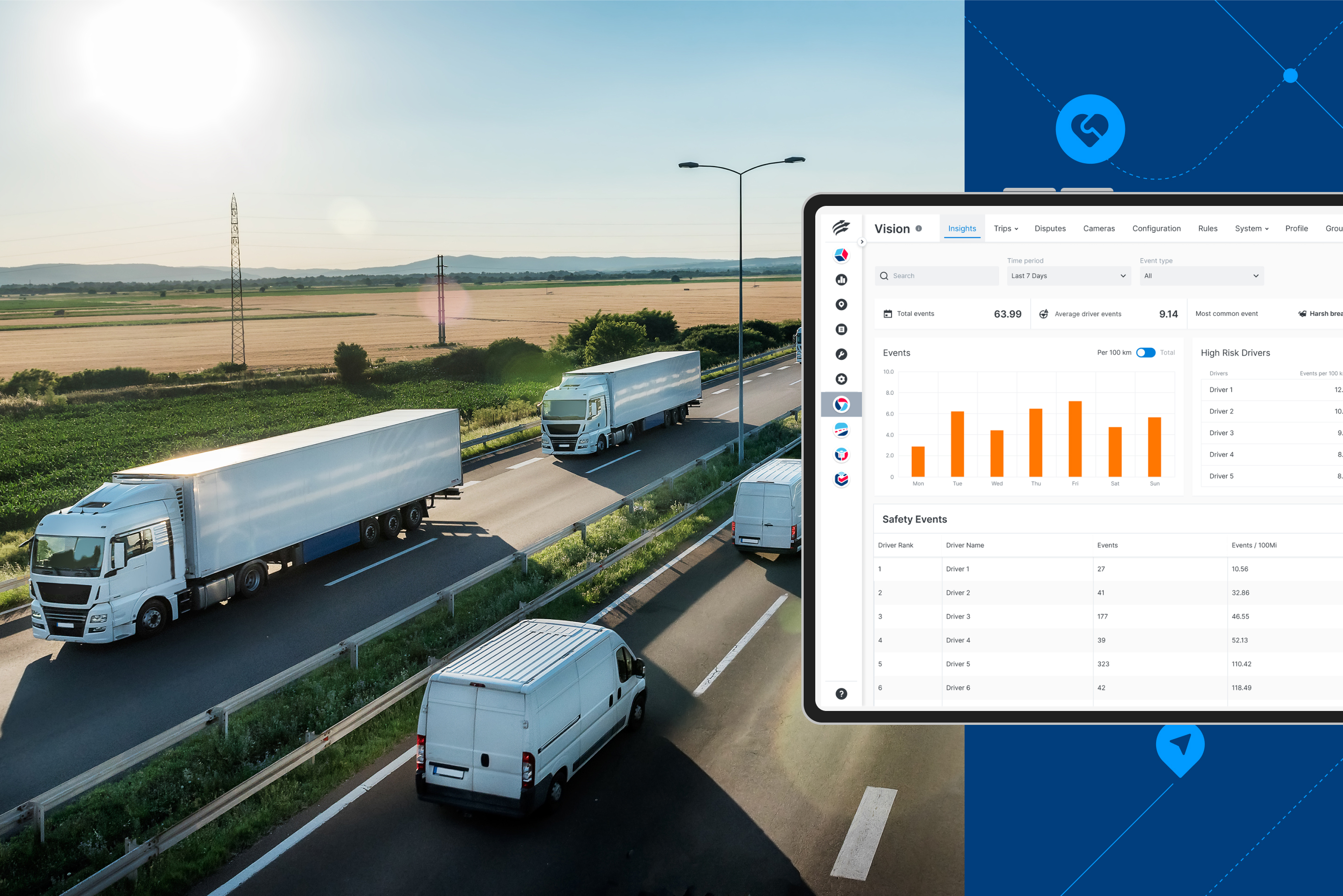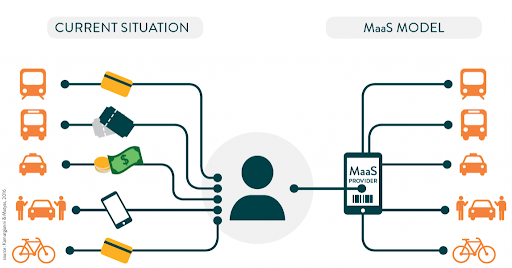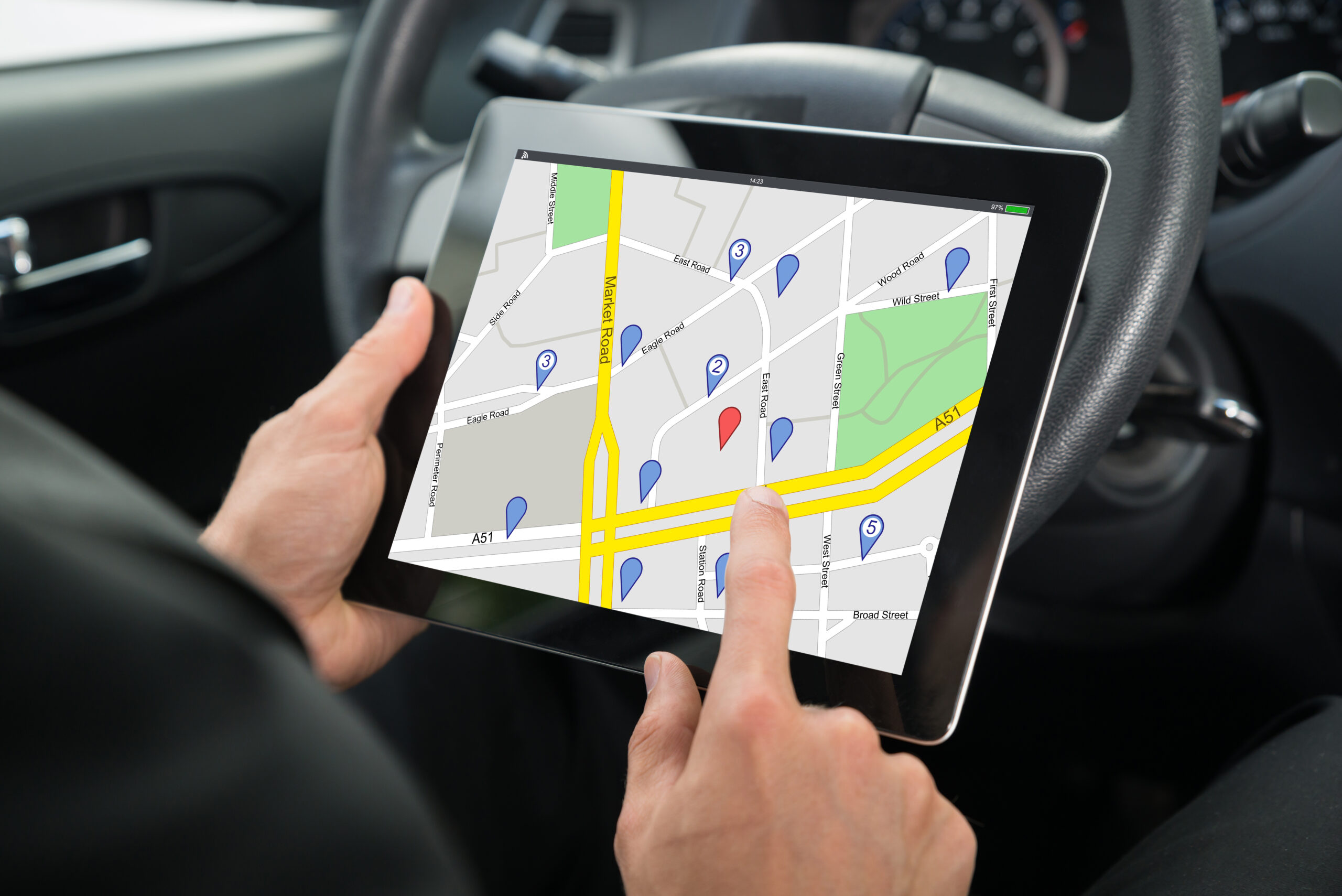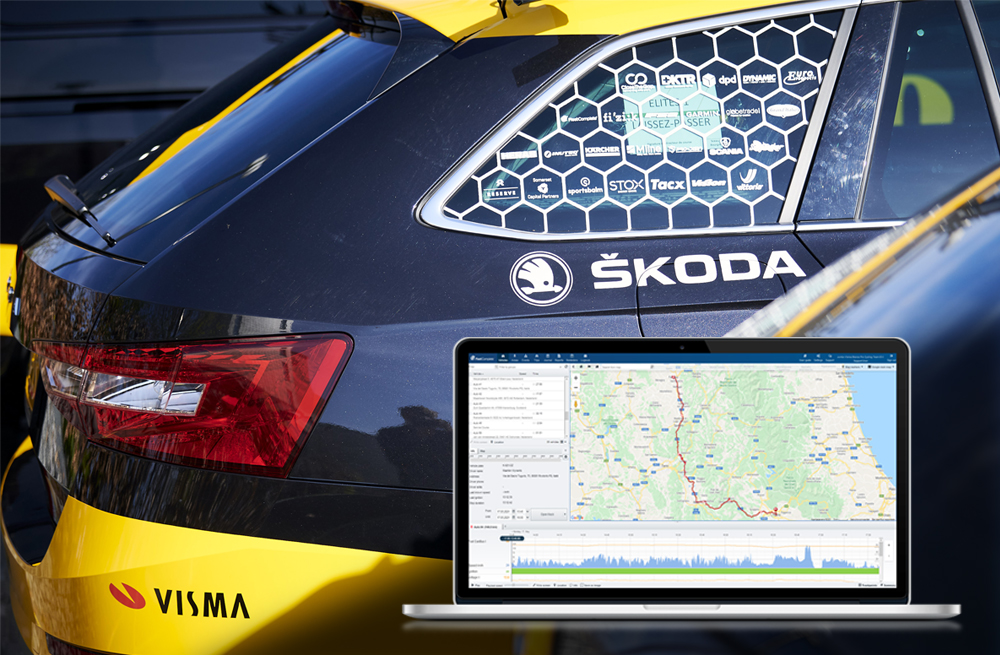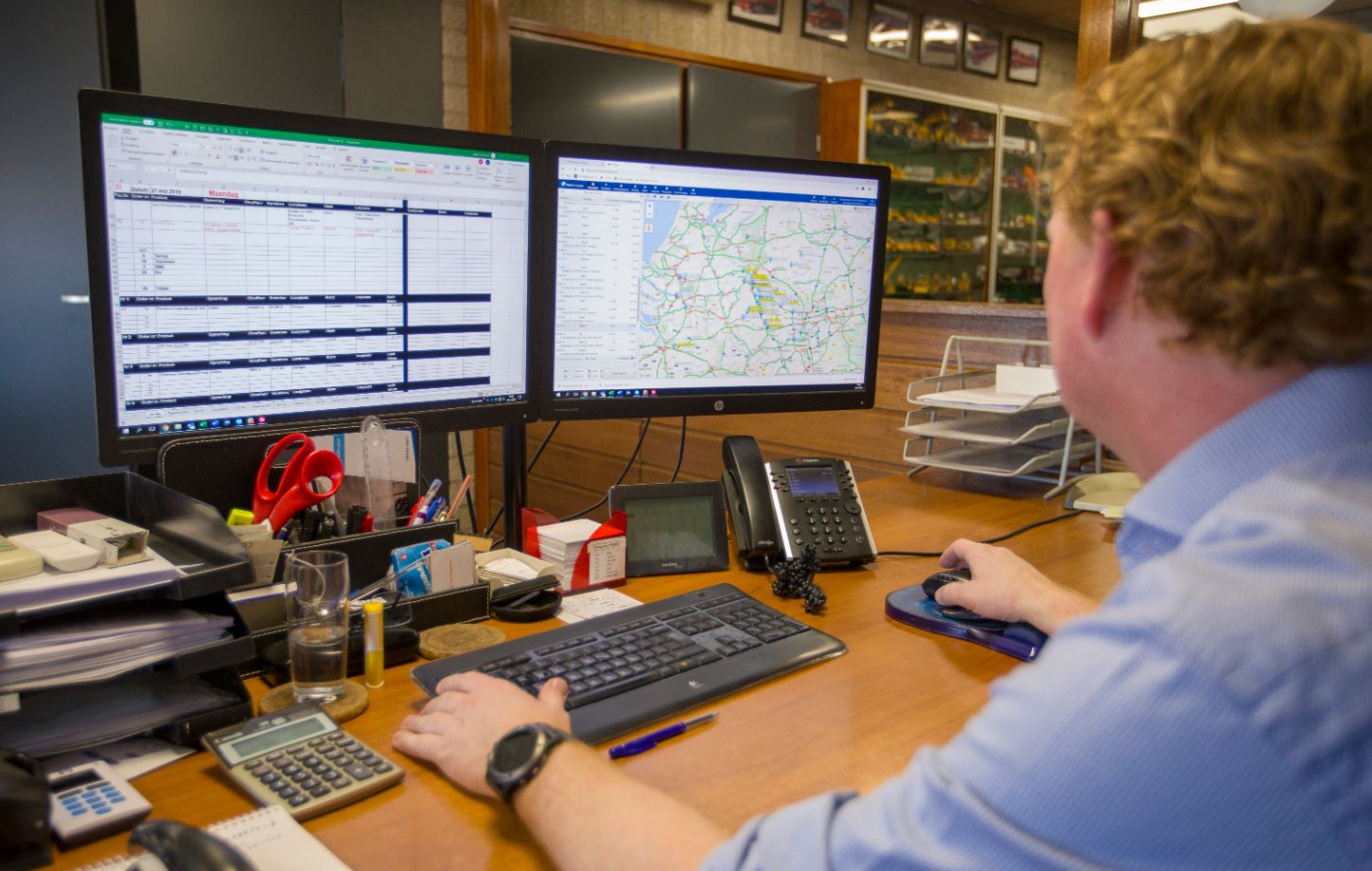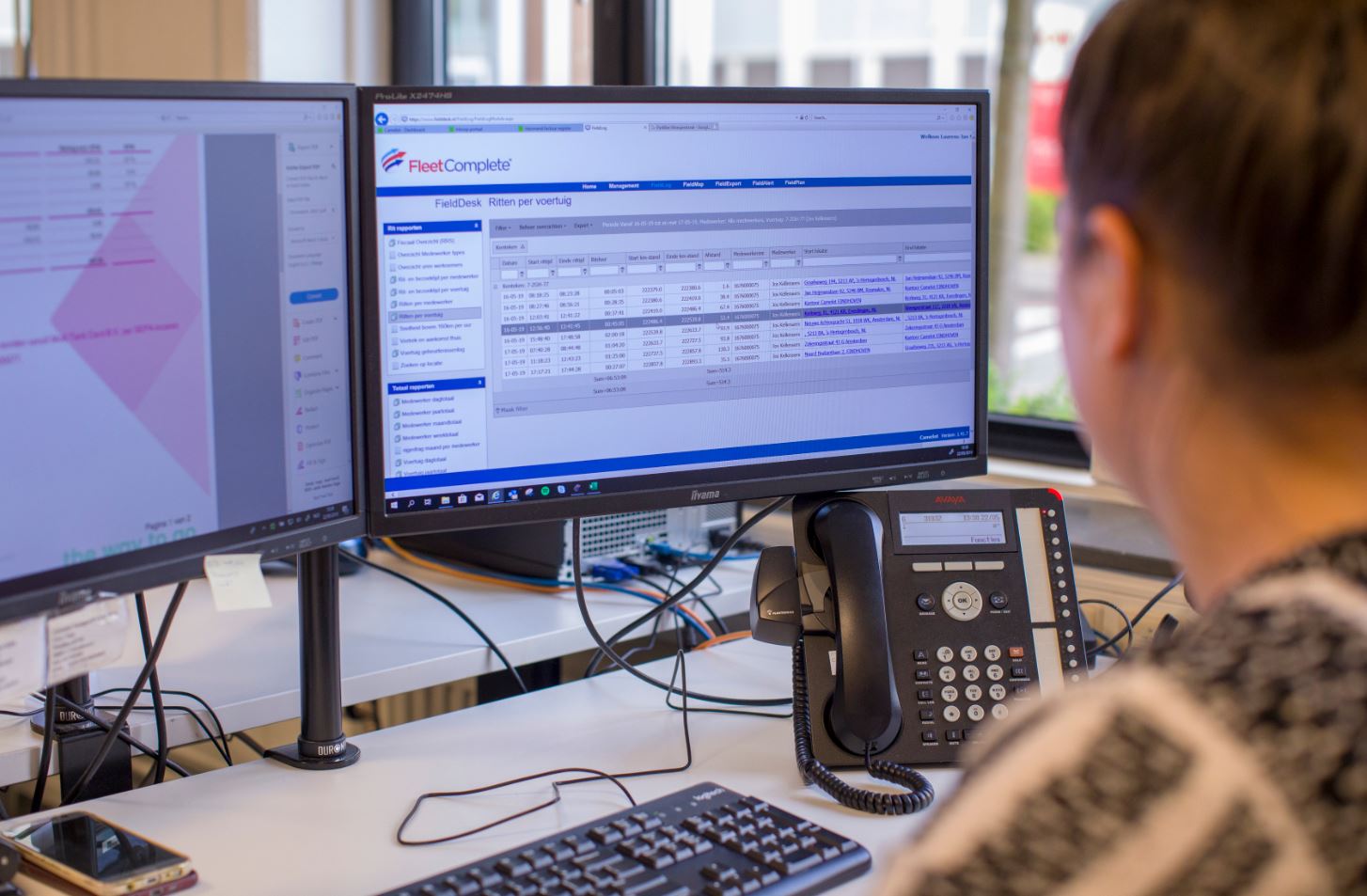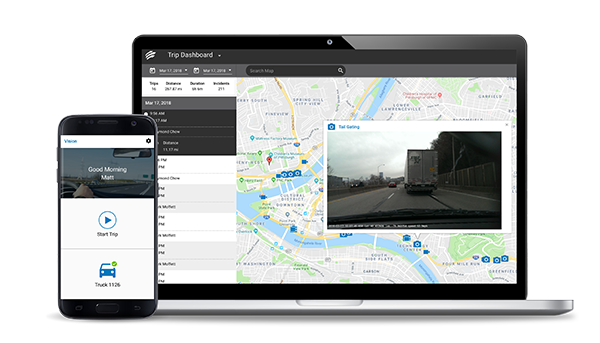Anyone can be a great driver, and fleets who want to attract and retain top drivers need to embrace diversity. This highlights the importance of creating a training program that is inclusive and considers the different ways drivers learn.
The numbers speak for themselves. According to one study, drivers who participated in training programs and received continuous performance feedback benefited from the following:
- 49–61% decrease in harsh braking
- Improved anticipation of road scenarios by 39–100%
- 59–89% reduction in sudden acceleration
- Shifting at the correct RPM increased by 30–45%
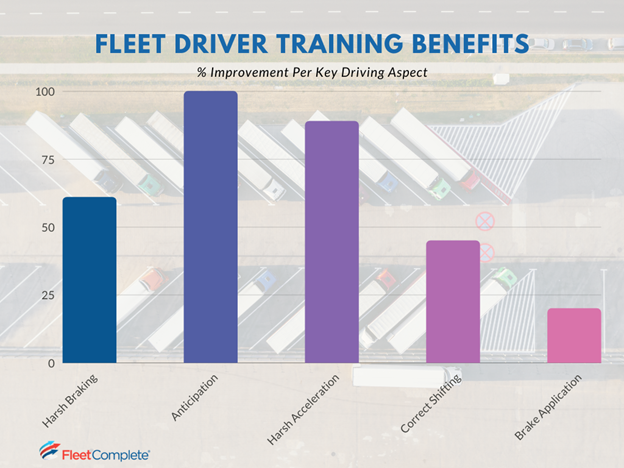
Providing continuous training with an emphasis on safer driving practices to fleet drivers significantly improves driving behaviors (Image Source: Powerfleet (formerly Fleet Complete) based on data from trucknews.com).
Driver training influences the outcome of every aspect of a fleet’s operations – from safety to customer service to profitability.
However, fleet managers need to take note that adopting a one-size-fits-all approach is not the best route when creating a driver training program that yields tangible results – simply because of the differences in how drivers absorb information and learn new skills.
Neurodiversity: Not Just a Buzzword but a Competitive Advantage
Neurodiversity is one of the prime examples of the inherent differences among fleet drivers.
One of the emerging sub-concepts of workplace diversity, equity, and inclusion (DEI) is neurodiversity. It means that learning methods and cognitive conditions such as ADHD and autism are just variations of the human brain rather than abnormalities.
Hiring neurodiverse employees and creating a diverse workforce in terms of gender, culture, and race has many benefits. An article by learning innovation expert Robert Austin and Harvard Business School professor Gary Pisano mentions, “Because neurodiverse people are wired differently from ‘neurotypical’ people, they may bring new perspectives to a company’s efforts to create or recognize value.”
In the same piece, Austin and Pisano cite the example of how Hewlett Packard Enterprise (HPE) boosted its productivity by 30% by hiring neurodiverse talent and how SAP Software Solutions saved $40 million through an innovative technical fix – all because they embraced neurodiversity.
Similarly, fleets that value innovation, productivity, problem solving, and process improvement will benefit from hiring neurodiverse drivers. However, this entails creating a training framework that will cater to this driver segment.

From thoroughness and accuracy to a creative approach to problem-solving, neurodivergent employees bring strengths to businesses that employ them (Image Source).
How can fleets create a driver training program that accommodates neurodiversity? Consider the following:
- Conduct a neurodiversity acceptance program. The first step to any successful training program catered to neurodivergent drivers is to ensure your fleet’s neurotypical workforce understands its purpose.
- Create customized training content. For instance, using bigger and easier-to-read fonts in your driver’s manuals will benefit dyslexic employees.
- Find out what will keep your neurodivergent drivers motivated to learn. For example, drivers with autism may absorb new skills more easily from a training program that incorporates a rewards system. Studies also show that they can better absorb, retain, and process new skills when training sessions are shorter but more frequent – known as microlearning.
- Assistive technology. Using apps and other technology solutions can make skills development programs more effective and more enjoyable for the drivers. For example, dyslexic drivers may convey their thoughts more articulately if they have access to speech-to-text apps instead of writing.
Tailor to Drivers’ Different Learning Styles
The concept of learning styles isn’t new. Modifying teaching methods to accommodate different ways people absorb and process information has been widely adopted in academia.
However, the same approach isn’t as evident when it comes to workplace training programs, which usually follow the preferred teaching method of the instructor.
As CarriersEdge CEO Jane Jazrawy explains, “It’s a natural instinct for driver trainers to teach according to their preferred learning style. Visual teachers use video and presentation tools, auditory teachers lecture and tell stories, and kinesthetic teachers ask learners to get up and participate. As a learner, you don’t get much of a choice in the matter and you learn to cope.”
Fleet managers need to veer away from this teacher-centric method of skills training and move toward a driver-centric approach to see a return on investment for their training programs.
The Role of Telematics in Diversifying Driving Training Programs
Using telematics data is an excellent way for fleet managers to personalize driver training programs, given the rich data these devices capture, record, and transmit.
It allows managers to see exactly where individual drivers have room for improvement, giving them data-based insight into personalizing each driver’s training based on their needs.
Apps Transport Group, a fleet company with an annual revenue of $90 million and employs 300 employees across Canada, has been using Powerfleet’s (formerly Fleet Complete) telematics solutions as a central component of their driver coaching program.
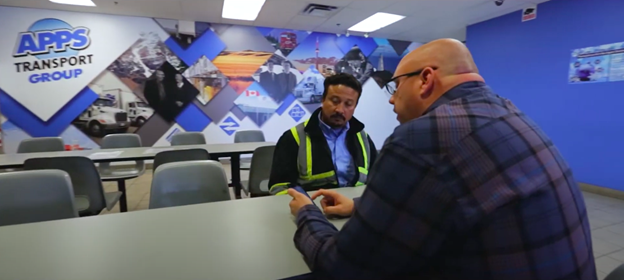
With Powerfleet’s (formerly Fleet Complete) telematics solutions, fleet managers can give personalized coaching pointers based on a driver’s performance.
“We’ve been using Fleet Complete for roughly 10 years, and I find it a great coaching tool for drivers. It’s all set up to receive messages on our phone when a driver encounters a harsh braking situation, a speeding situation, or if there are fall codes that the truck ECM is giving off…A lot of people look at it as ‘Oh, it’s a way of watching the driver.’ It’s not a way of watching the driver. When you really look at how it works and the data it produces in our toolbox of training, it’s the perfect tool,” says Guy Broderick, driver training supervisor.
Fleets That Harness the Power of Diversity — Win
A homogenous training program has never worked for all employees, and it never will. Catering to neurodiversity and different learning styles provides improvements to driver engagement, along with measurable business benefits in terms of safety, productivity, and profitability.
Through customized training content, driver-centric methodology, and assistive fleet management technology, fleet managers can unleash the full potential of their diverse team of drivers.
If you’d like to find out how Powerfleet (formerly Fleet Complete) can help you create training programs for your diverse driving team, learn more by requesting our Powerfleet (formerly Fleet Complete) demo.















